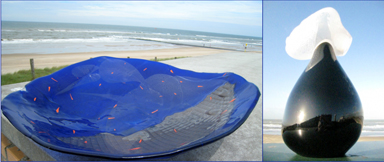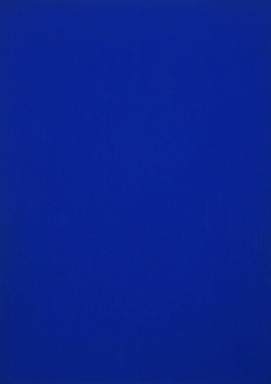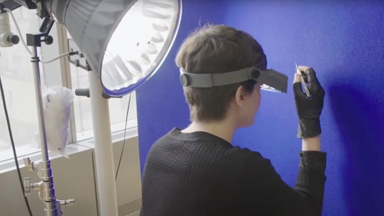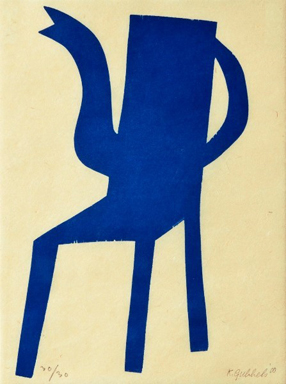
Article at Nieuwsbrief 15-06-2020, by Josée Claassen, art historian.

PUBLICATION
Article at Nieuwsbrief 15-06-2020, by Josée Claassen, art historian.
ART AND CULTURE CIRCLE
BIKKEL: BLUE AND WATER

Bikkel, member of the society and passionate artist, is the reason for this art talk this week. Blue is Bikkel's favorite color and she also likes water. The latter can be seen in the way she exhibits her own works of art in the image above: on the beach near the sea. To make glass art you need water to cool with, that is a second reference to water and the space where Bikkel exhibited in her work was called Kunst aan de Kade. (Art on the Quay)

Bikkel is not the only artist who loves blue. The most famous is of course Yves Klein (1928-1961). He used a deep blue color that he captured as the I.K.B., the International Klein Blue. The most famous exhibition, Le Vide, was held in 1958 at the Iris Clerts gallery in Paris. It was an elaborate mise-en-scene: the windows of the gallery were painted blue and a blue fabric vault was installed in front of the entrance. The gallery itself was completely empty, while Klein painted the walls white. Before that, he locked himself in the gallery for 48 hours. During the opening, guests were given a blue drink, which turned their urine blue. Their body was, as it were, completely fertilized, saturated with blue, says Klein.
Yves Klein mixed for his I.K.B. ultramarine with a special fixative and applied it everywhere. Here we see his 1961 Blue Monochrome located at the MOMA in New York. It was restored not so long ago.

This is often quite a challenge with modern visual art, because every visual artist has his own way of applying a primer, mixing paint and whether or not applying a varnish layer. For example, during the restoration of this work, the restorer used fragments of the blue paint that was on the back of the canvas to get the right color. That kind of "skin graft" was the only way to find the exact same color for front recovery.

Dutch artist Klaas Gubbels (1934) is also fond of blue. We know him from the coffee pots and chairs, which he designs in all kinds of materials and colors. In the Rijnstate hospital in Arnhem you can see this small screen print from 2000, in which Gubbels combines both image elements: the chair that tells its own small story, invites other chairs, disguises itself as a coffee pot and gets human traits. A festive chair dance in the waiting room of the hospital. One of the former directors of this hospital, Leon van Eijk, started his career as a sculptor. His love for art can be seen all over the hospital, a joy for patients in this harsh Corona era.

The young Pablo Picasso (1881-1973) painted a lot in blue after the suicide of his friend Carlos Casagemas for about three years. This 1903 painting is entitled The Tragedy. The work is on display at the National Gallery of Art in Washington. The tragedy that has unfolded remains unclear, but it is an evidently sad subject, as is the case with most of his other paintings from his blue period. Picasso was not rich then. Technical research showed that he previously painted at least four other scenes on this canvas, probably because he could not afford a new canvas.
In this week's music, Bikkel's two loves come together: the color blue and water. Gustav Holst echoed the blue planet Neptune, named after the god of water, of the sea. In the music you hear the planet, which is furthest from the sun and not visible to the naked eye, looming in the distance and then suddenly there are enchanting female voices. Their distant almost extraterrestrial sounds are directed in the score by Holst: the women must be placed in a place that is invisible to the public. The piece of music lasts over 7 minutes. Have fun listening and see you next week.
The blue planet: https://youtu.be/v4wuV14QlNM.
Josée Claassen
https://imagomusica.nl